
Sometimes, in order to sketch out the future, it’s interesting to go back to the past and see how previous generations imagined the world we have today. Many of these ideas (which are always optimistic) were reflected in art, specifically in retrofuturism. This artistic movement combines a longing for the past and the hope for a utopian – and sometimes dystopian – future, where innovation and technology lead the way.
In another post, we talked about how cartoonists and retrofuturist artists imagined the roads of the future. In this one, we’re going to focus on another setting that has long caught their attention and been the center of their illustrations: cities.
A retro yet futuristic city
In the 1980s, when experimental artist Lloyd John Dunn coined the term retrofuturism (shortly before publishing a magazine with the same title), an era of optimism reigned. Highly significant technologies were beginning to be developed, and innovation was seen as the solution to many problems. The sustainability of growth was hardly questioned, and cities were seen as the places where the future was conceived and made a reality.
The inspiration for these artists came from ideas that had begun to be forged decades earlier. In the ‘50s and ‘60s, many illustrators embodied their vision of the future in their work. The works of artists such as Arthur Radebaugh or Klaus Bürgle and magazine publications like ‘Closer Than We Think’ are good examples.
These are some of the ways they imagined the cities of the future, which subsequently served as inspiration:
- The drive-up hotel
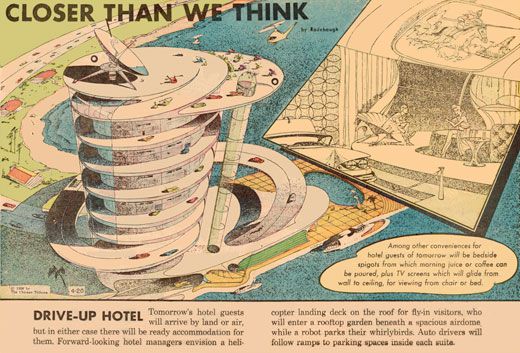
The drive-up hotel was a building that guests could reach both by land and by air. It therefore had a helipad on the roof and robots that can park vehicles.
Today, prototypes of flying taxis and other electric vertical take-off and landing vehicles (eVTOL) already exist. These vehicles may change the way cities are designed and organized over the next few decades.
- Moving sidewalks

In the 1960s, people imagined that many places (such as apartments or shops) could be reached by moving sidewalks in the cities of the future. Today, this solution is still being considered in many cities, either to facilitate transit in hilly areas or as an alternative to motor vehicles.
- Supermarkets with self-service
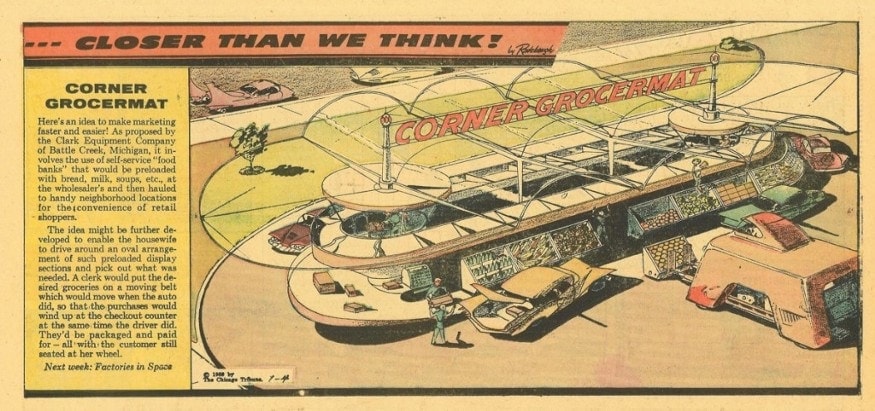
The ultimate aim was for the customer to be able to make a purchase without having to get out of their vehicle – not even to pay. It was thought that these markets would have a conveyor belt that would add items as the car moved along, all the way until it reached the register. Once the purchase was completed, an employee would put it in the trunk of the vehicle.
- Also in the supermarket: voice-controlled cash registers
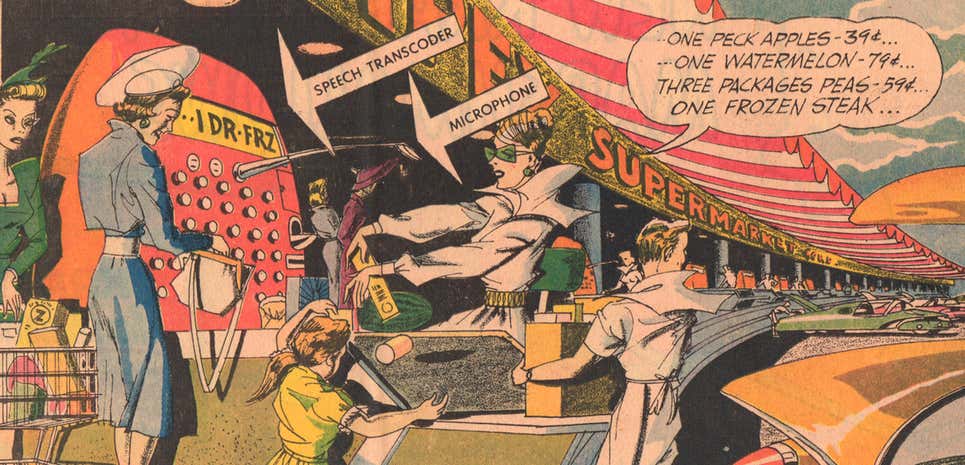
Cash registers that could understand the human voice also promised to make everyday shopping easier. A customer would simply dictate the purchase being made for the machine to do the calculations. Again, they wouldn’t even have to get out of the car.
- Education at the click of a button
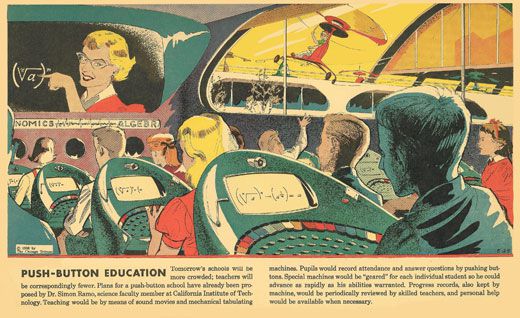
Dr. Simon Ramo from the California Institute of Technology proposed an educational system where teaching would be based on film and technology. Students would record their attendance and answer questions through machines. This way, teachers would only have to measure their progress and carry out evaluations.
Half a century after these images were published, technology has advanced enough to make this idea possible. In fact, it was the solution for many students to continue with their classes during the COVID-19 pandemic. However, access to the internet and educational technologies isn’t universal, and this still isn’t a possibility for millions of children in developing countries.
- Cops with a thousand eyes
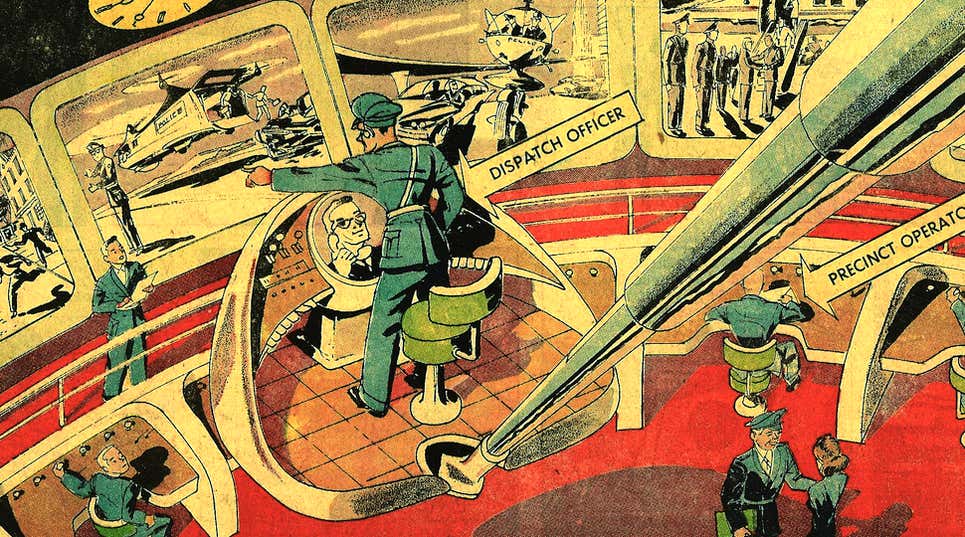
In the cities of the future, police officers would use technology to monitor any area and communicate with each other. Today, video surveillance systems and connectivity between devices make this idea sound quite possible (at least from a technological point of view, not considering privacy).
- Solar houses
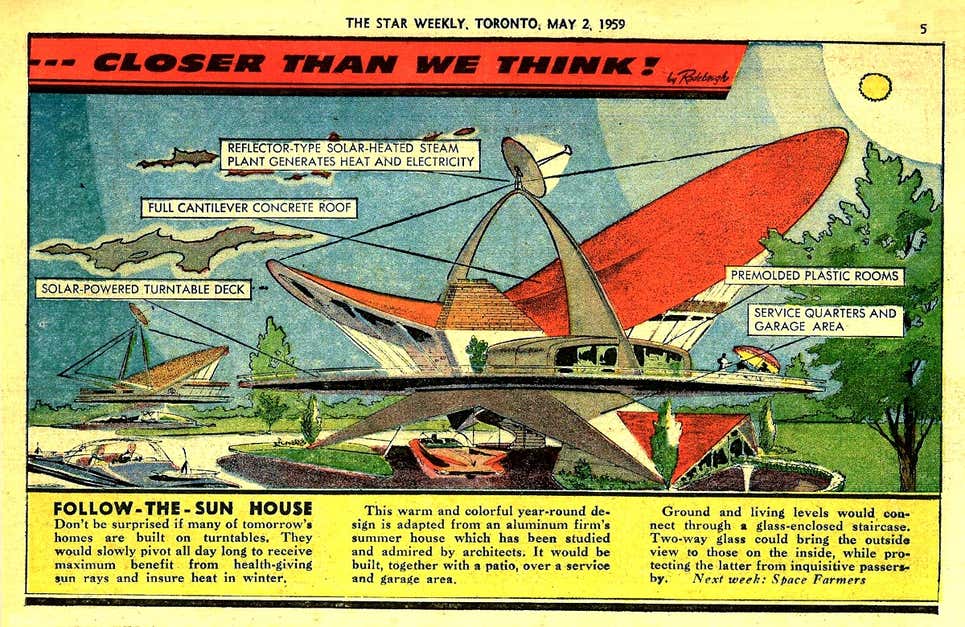
“Don’t be surprised if many of tomorrow’s homes are built on turntables. They would slowly pivot all day long to receive maximum benefit from health-giving sun rays and ensure heat in winter,” this illustration reads.
The truth is, this prediction hasn’t come true. However, the cartoonists did hit on the idea that homes would begin to harness solar energy to promote the well-being of their inhabitants.
The examples don’t end there. Electronic bookstores at home, hospitals that heal people without surgery, and fully automated trains are just a few ideas of the future that these artists had 80 years ago. Many of them have already become a reality.





There are no comments yet